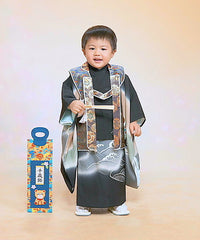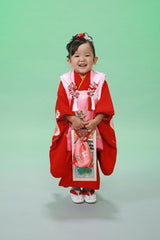Your Cart is Empty
Free Shipping on All Subscriptions Worldwide

Back in the day with limited medical knowledge, there was a high mortality rate in children. Japan's mortality rate of children was so high, children under the age of three were not even included in the family register!
This was why Japanese culture emphasized the importance of children, making it a tradition to celebrate their growth through adolescence.
This tradition came to be called, “Shichi-Go-San,” which literally translates to, “Seven Five Three,” and is celebrated on November 15th.

Today, you will see families all over Japan celebrating by taking commemorative pictures like this
So when did this originate?
“Shichi-Go-San,” dates all the way back to the Muromachi Period (1336-1573), but officially became a tradition during the Edo Period (1603-1868).
The day became an opportunity to celebrate your child's growth and good health, and a way for parents to thank the gods for their children's survival. It was only a ceremony for the Imperial court and nobles, but became common due to advertisements of Kimono shops during the Edo Period.

An illustration of a woman wearing a kimono in the Edo period.
The date November 15th was chosen because the 15th day of the lunar calendar falls on the Kishuku-nichi day of the Nijuhasshuku (Twenty-eight mansions, a date counted in Japanese/Chinese astronomy). This was a lucky day when when it was thought that “oni” or ogres did not walk around.

A statue of the mystical creature, "Oni"
Also, the month of November in the old calendar was a month to appreciate Fall’s harvest. Since the date of the Full Moon fell on the 15th, it was time to celebrate the year’s harvest and to honor the gods.
So, why the numbers, “7,5,3?”
The name describes the ages at which the children celebrate:
Boys will celebrate at 3 years old and 5 years old.
Girls will celebrate at 3 years old and 7 years old.
At 3 years old, both girls and boys will start growing their hair (Kami-Oki)


A boy and girl celebrating Kami-oki.
At 5 years old, boys will wear a Hakama, which is a Japanese Formal Dress for men. (Haka-magi)

A boy wearing a Hakama.
At 7 years old, girls will transition from wearing a toddlers kimono to a child’s kimono. (Obi-toki)

A girl celebrating obitoki.
Why is there an age difference between when the boys celebrate and when the girls celebrate?
That’s because boys were much more prone to illness, and had a higher chance of passing compared to girls. This was why rituals for boys were done much earlier than girls.
In every picture there is of kids celebrating Shichi-Go-San, they’ll be holding a long bag in their hands. Like this girl and boy:

Siblings celebrating Shichi-go-san together
Inside the bag is a rod shaped candy. This, “Chitoseame,” or “Thousand year candy,” prays for the “long” life of the child, and for them to live a healthy, tenacious life. The decorations depicted on the bag includes a crane, tortoise, pine, bamboo, and plum, all which symbolize good health and wellbeing.

A "Chitoseame," and the candy inside
From generation to generation, this celebration has been passed down despite the changes in the quality of living. Although the mortality rate of children may be much lower than in the past, this celebration is a great way for parents to appreciate the wellbeing of their children.
A lot may change throughout the years, but a parent's love for their child will always be the same.
What are some other unique Japanese traditions? Check them out here:
Comments will be approved before showing up.